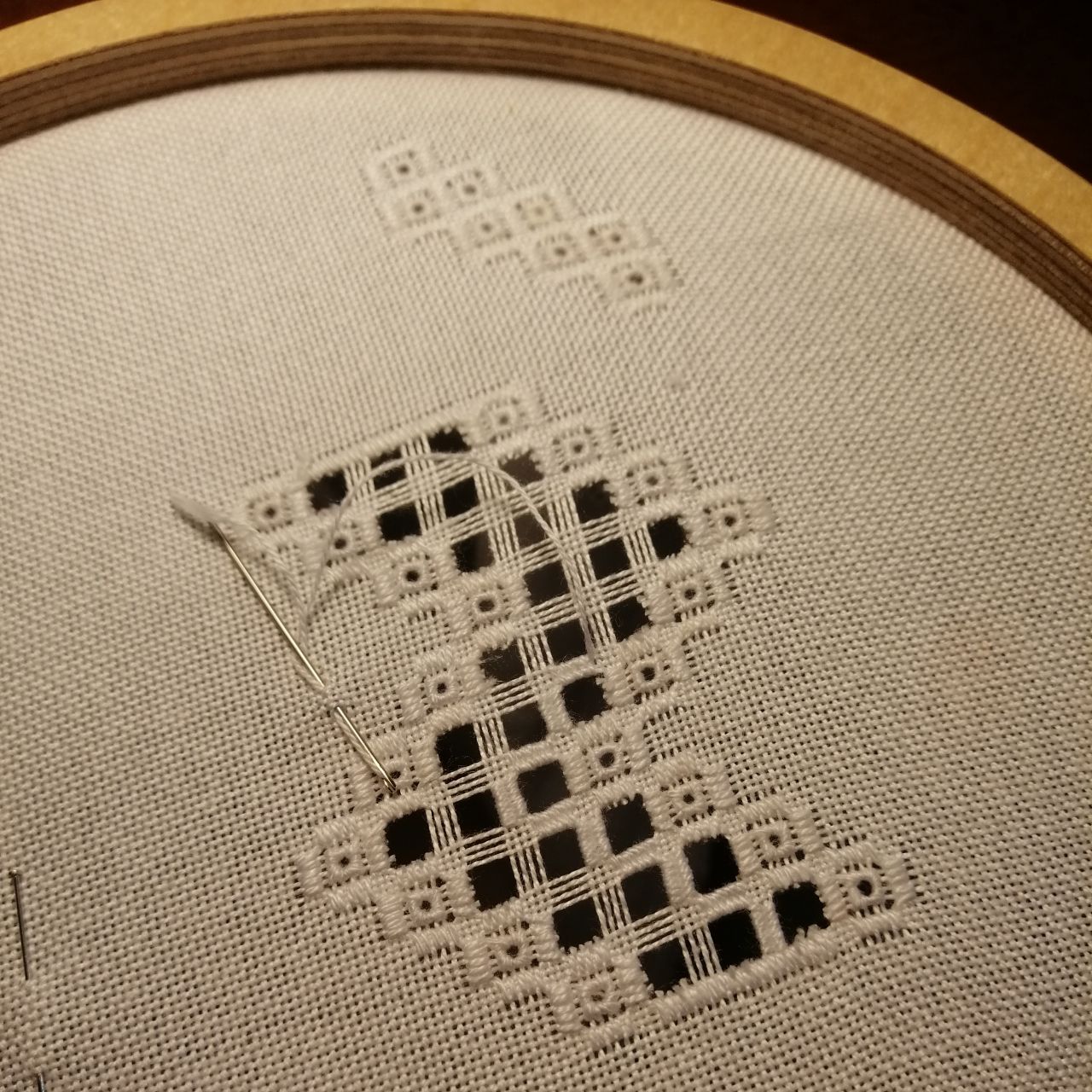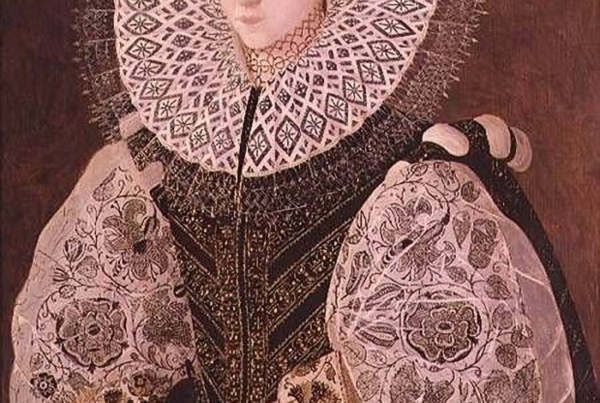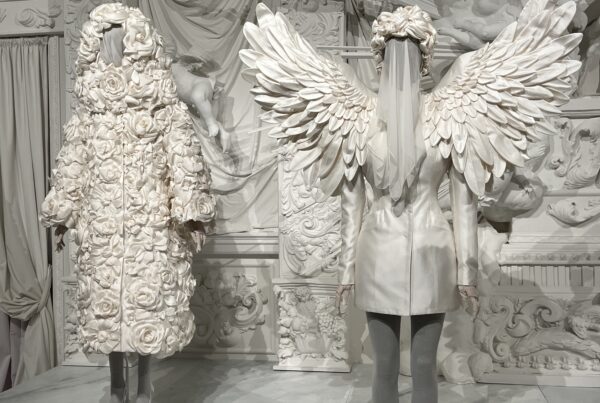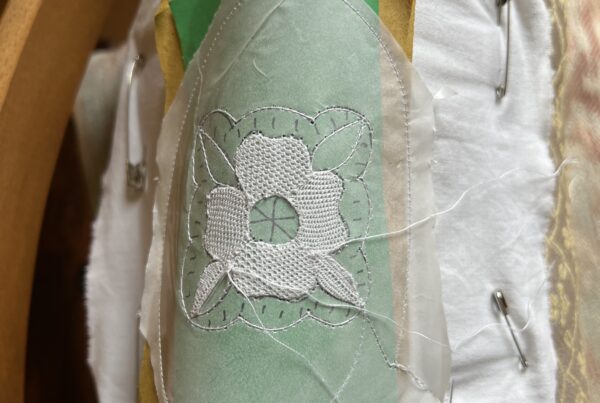Nell’incantevole distretto di Hardanger, immerso tra i fiordi occidentali della Norvegia, fiorisce un’arte senza tempo, capace di affascinare i cuori con la sua intricata bellezza. Il ricamo Hardanger, un tempo noto come hvitsøm o “lavoro bianco,” è un testimone della ricca eredità culturale e della maestria artigianale della regione, con una storia affascinante quanto i suoi punti.
Le origini esatte del ricamo Hardanger sono avvolte nel mistero, ma le sue radici possono essere rintracciate nell’antica Persia e Asia. Si ritiene che questa primitiva forma di ricamo abbia attraversato i continenti, giungendo in Europa durante il Rinascimento. In Italia, si è evoluta in Reticella e nei merletti veneziani, gettando le basi per le tecniche intricate che avrebbero poi definito il ricamo Hardanger.
Entro il XVII secolo, le varianti di questo ricamo si erano diffuse nel nord Europa, dove prosperarono e si diversificarono. In Danimarca e nei Paesi Bassi divenne il Hedebo danese e olandese, mentre in Scozia fu abbracciato come ricamo di Ayrshire. Nel frattempo, nei terreni aspri della Norvegia, trovò la sua vera dimora, evolvendo nell’arte raffinata conosciuta come ricamo Hardanger.
Il periodo d’oro del ricamo Hardanger
Tra il 1650 e il 1850, periodo noto come l’età d’oro dell’Hardangersøm (letteralmente “lavoro dell’area di Hardanger”), questa tradizione prosperò in Norvegia. La coltivazione del lino fiorì, fornendo le materie prime essenziali per il ricamo Hardanger: tessuti e fili bianchi. Coltivati, cardati, filati e tessuti con estrema cura, questi materiali divennero la base di straordinarie opere d’arte, che adornavano i tradizionali abiti norvegesi chiamati bunad, oltre a vestiti e biancheria per la casa come tovaglie, tende e copriletti.
L’essenza del ricamo Hardanger
Al centro del ricamo Hardanger si trovano i complessi blocchi Kloster, una serie di punti piatti accuratamente ricamati su una griglia di fili del tessuto. Composti da cinque punti paralleli, questi blocchi delimitano aree designate del tessuto, all’interno delle quali i fili di ordito e trama vengono delicatamente tagliati e rimossi. Il risultato è un affascinante gioco di fili sciolti e ampie aperture, racchiuse con precisione dai blocchi Kloster.
Ma non è solo l’eleganza strutturale a definire il ricamo Hardanger; è l’arte dei punti decorativi di riempimento che dà vita a ogni pezzo. Gli artigiani creano la loro magia utilizzando fili tono su tono che si armonizzano con il tessuto, dando origine a una sinfonia di motivi scultorei. Ogni punto, posizionato con precisione, aggiunge profondità e dimensione, trasformando il tessuto in una tela di bellezza eterea.
L’eleganza della semplicità
Nel regno del ricamo Hardanger tradizionale, la semplicità regna sovrana. La purezza dei fili di lino bianchi o crema, che riflettono la tonalità del tessuto, esalta i dettagli intricati dei punti. È una celebrazione dell’eleganza sobria, in cui l’assenza di colore amplifica la maestria e la complessità di questa forma d’arte.
Un’arte senza tempo
Mentre il mondo riscopre il fascino dell’artigianato fatto a mano, il ricamo Hardanger si erge come un faro di bellezza eterna e significato culturale. Dalle sue umili origini tra i fiordi della Norvegia alla sua apprezzata diffusione globale, questa tradizione antica continua ad affascinare i cuori e ispirare generazioni, ricordandoci il potere eterno dell’arte e della tradizione.




